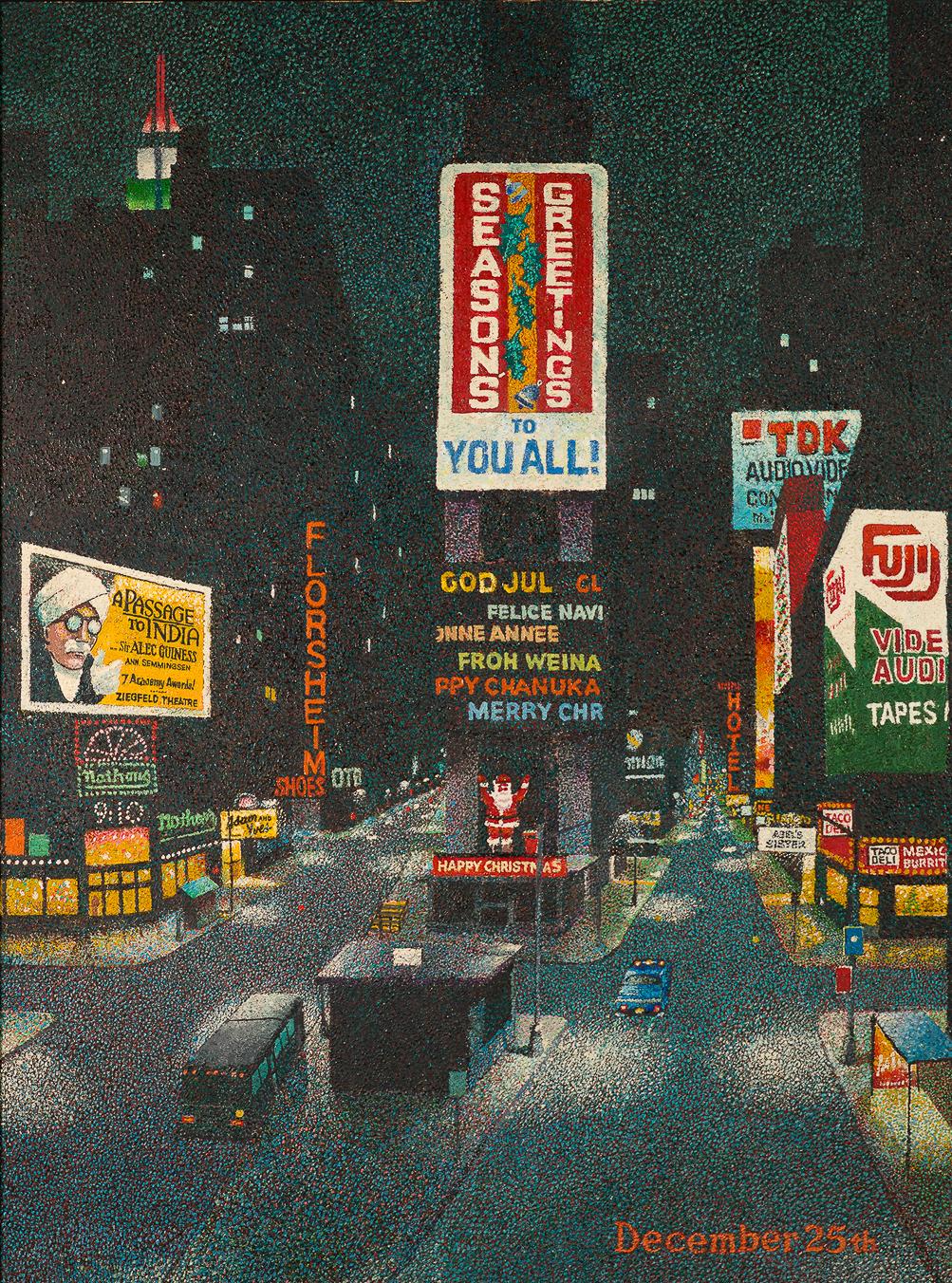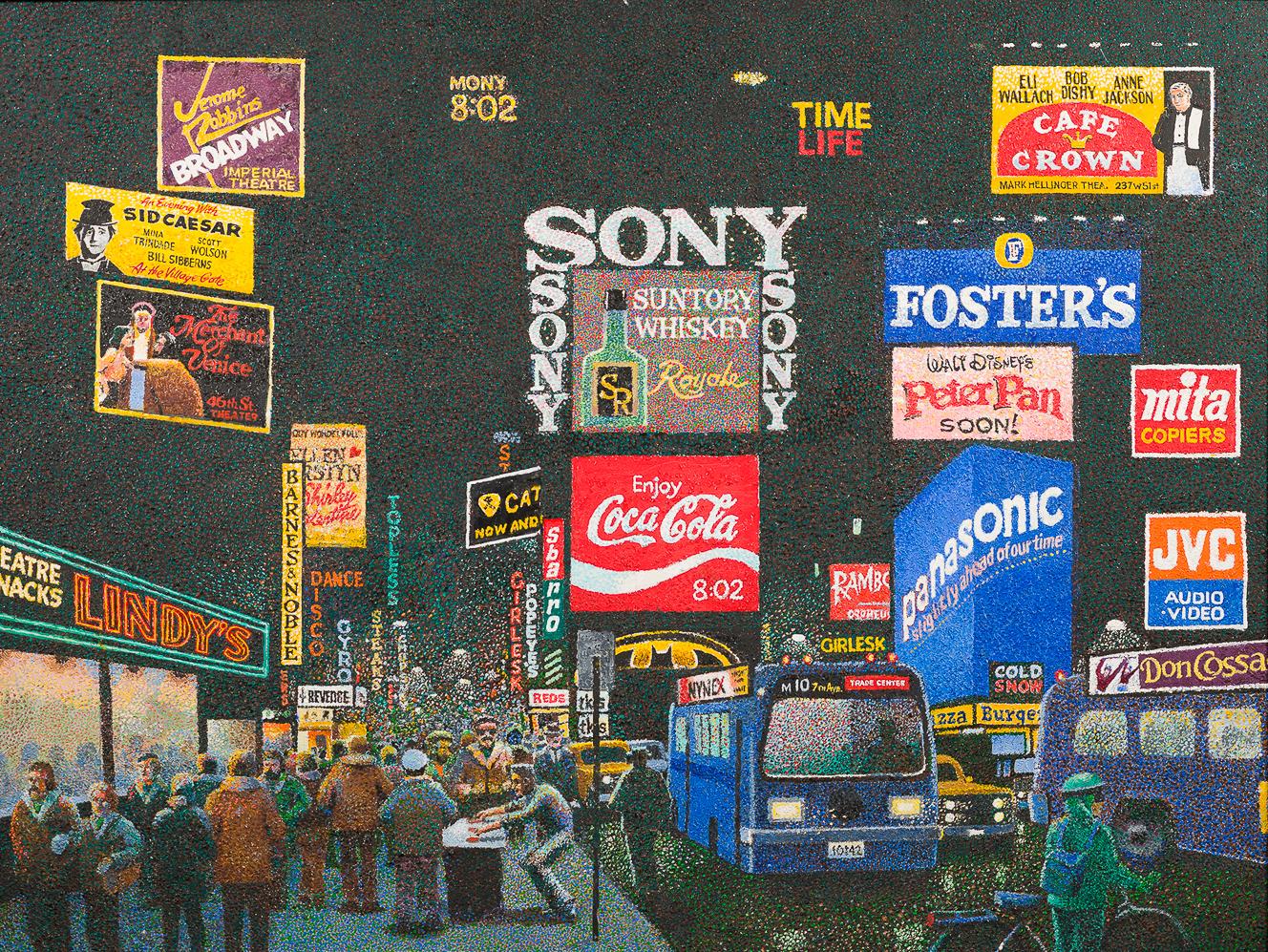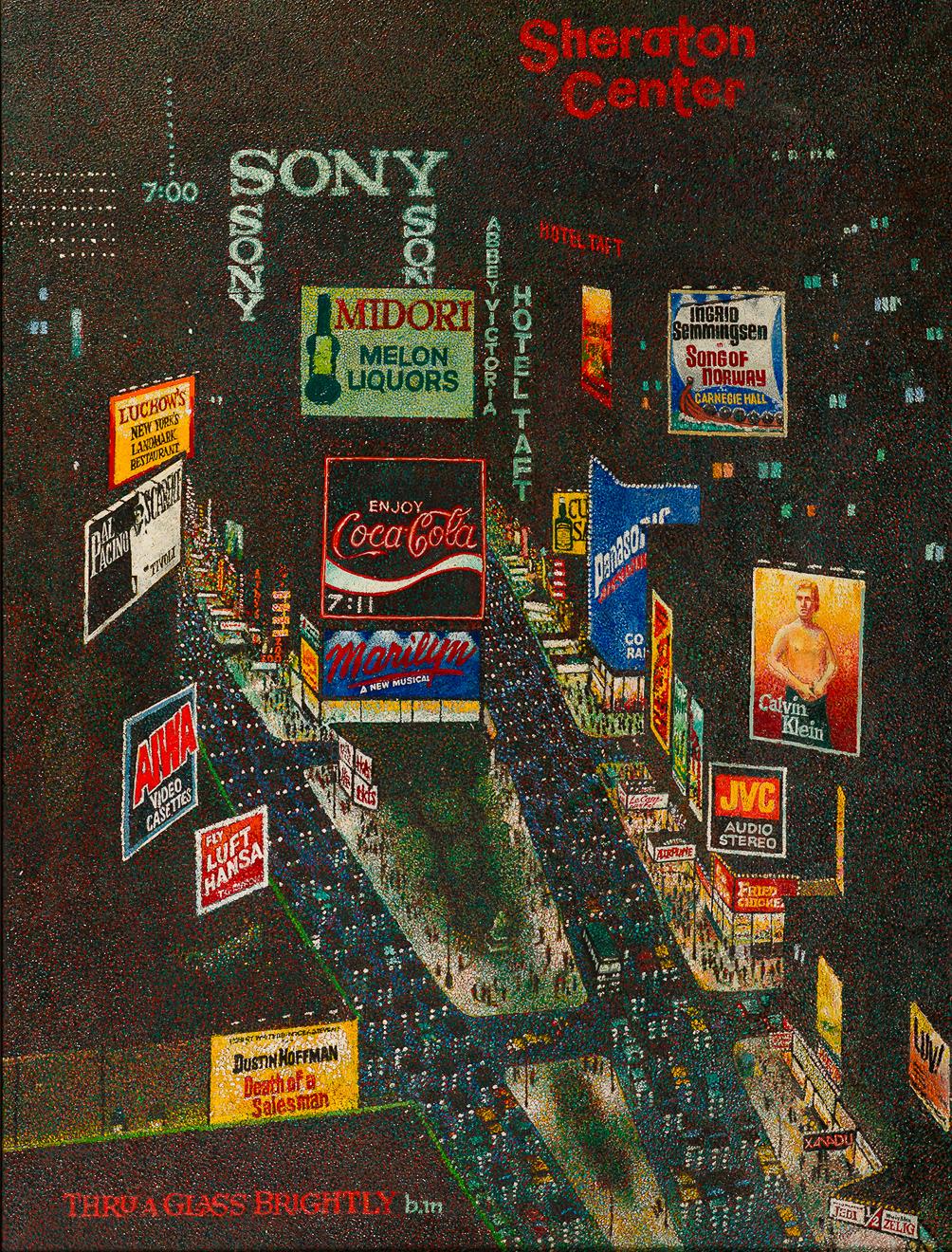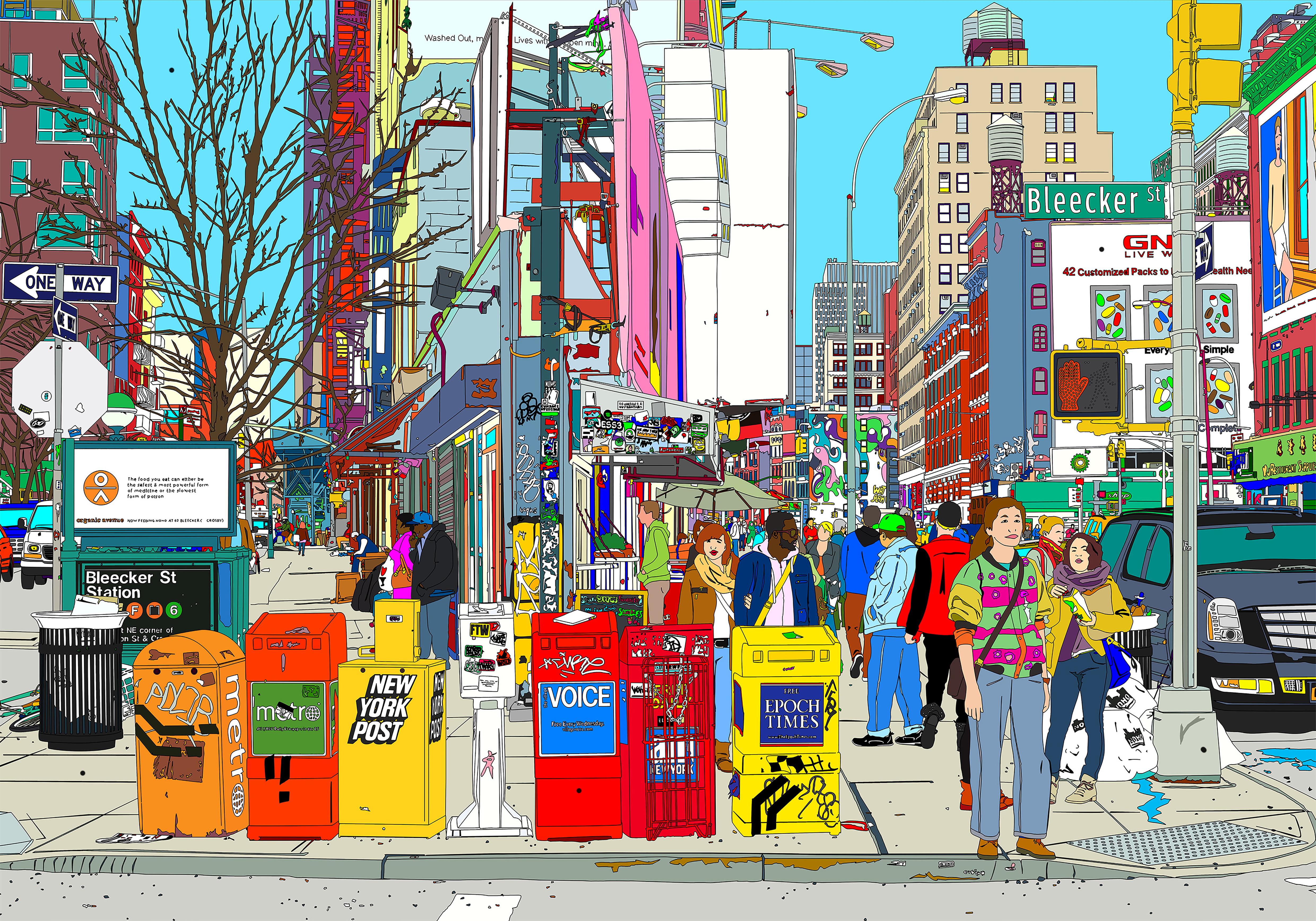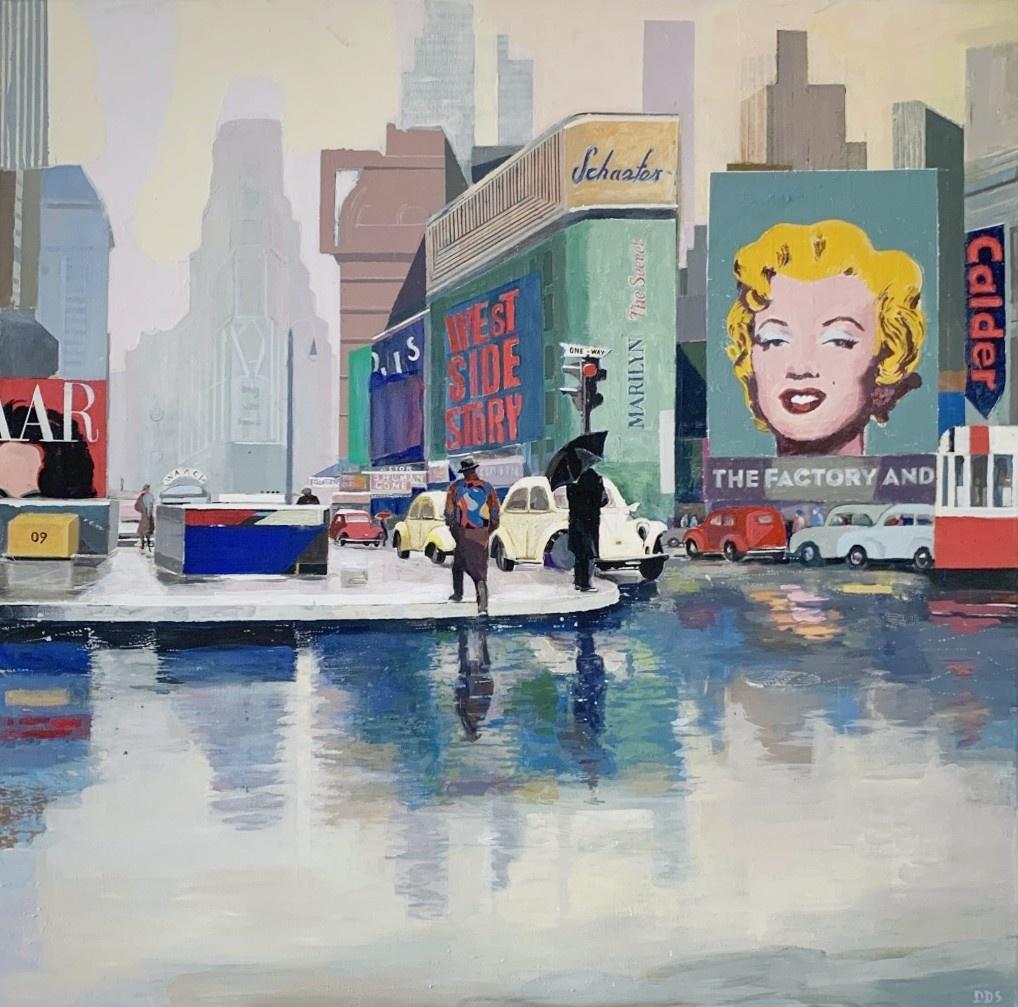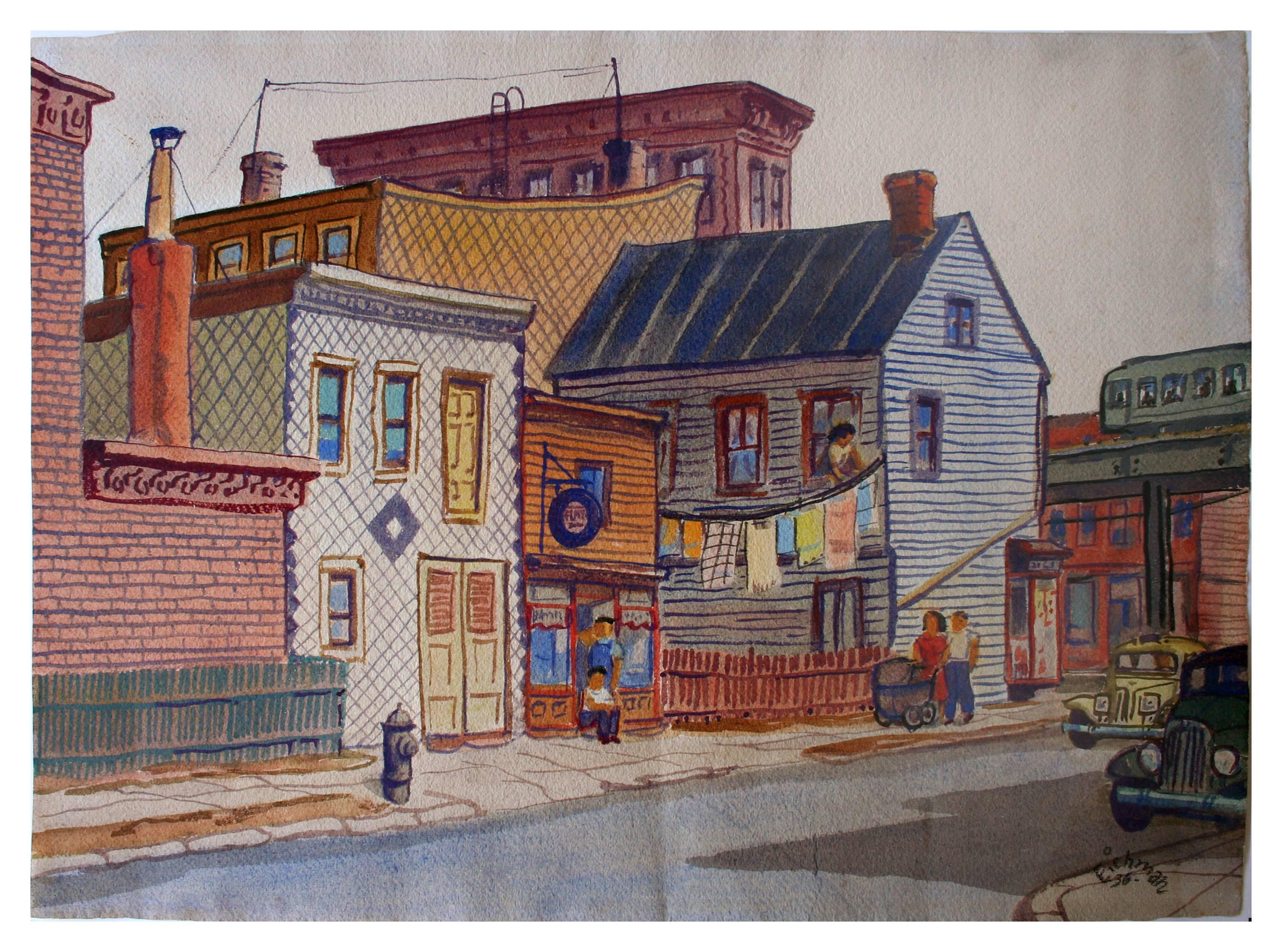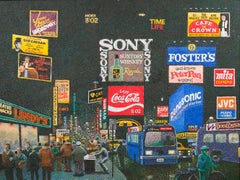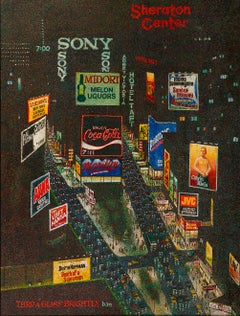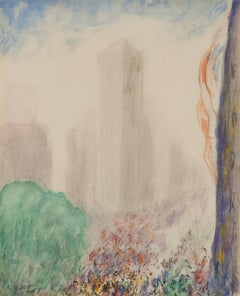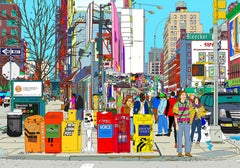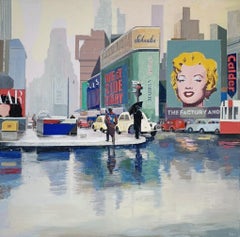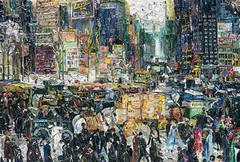Items Similar to The Big News is Always on 42nd Street
Want more images or videos?
Request additional images or videos from the seller
1 of 6
Alec MontroyThe Big News is Always on 42nd Street
$13,000
£9,803.29
€11,337.98
CA$18,238.93
A$20,273.70
CHF 10,627.04
MX$247,590.99
NOK 132,672.48
SEK 124,820.05
DKK 84,623.36
About the Item
Alec Montroy depicts a group of figures standing on a street corner a few blocks from Times Square in his work entitled “ The Big News is Always on 42nd Street.”
- Creator:Alec Montroy (1918 - 2006, American)
- Dimensions:Height: 24 in (60.96 cm)Width: 35.88 in (91.14 cm)
- Medium:
- Movement & Style:
- Period:
- Condition:
- Gallery Location:New York, NY
- Reference Number:1stDibs: LU11913423912
About the Seller
5.0
Recognized Seller
These prestigious sellers are industry leaders and represent the highest echelon for item quality and design.
Established in 1995
1stDibs seller since 2012
28 sales on 1stDibs
Typical response time: 2 hours
- ShippingRetrieving quote...Shipping from: New York, NY
- Return Policy
Authenticity Guarantee
In the unlikely event there’s an issue with an item’s authenticity, contact us within 1 year for a full refund. DetailsMoney-Back Guarantee
If your item is not as described, is damaged in transit, or does not arrive, contact us within 7 days for a full refund. Details24-Hour Cancellation
You have a 24-hour grace period in which to reconsider your purchase, with no questions asked.Vetted Professional Sellers
Our world-class sellers must adhere to strict standards for service and quality, maintaining the integrity of our listings.Price-Match Guarantee
If you find that a seller listed the same item for a lower price elsewhere, we’ll match it.Trusted Global Delivery
Our best-in-class carrier network provides specialized shipping options worldwide, including custom delivery.More From This Seller
View AllDecember 25th
Located in New York, NY
In his artwork entitled, “December 25th,” Alec Montroy paints a New York City street blanked with snow but illuminated still by the numerous neon signs ab...
Category
Late 20th Century American Modern Landscape Paintings
Materials
Canvas, Oil
$19,000
Lindy’s
Located in New York, NY
In this artwork by Alec Montroy entitled “Lindy’s,” the artist paints the iconic Times Square in New York City and the numerous electronic signs above it.
Category
Late 20th Century American Modern Landscape Paintings
Materials
Canvas, Oil
$27,500
Thru a Glass Brightly
Located in New York, NY
“Thru a Glass Brightly” by artist Alec Montroy is a view of Times Square from a unique elevated perspective.
Category
Late 20th Century American Modern Landscape Paintings
Materials
Canvas, Oil
New York
By Abraham Walkowitz
Located in New York, NY
Signed and dated lower left: A. WALKOWITZ / 1908
Category
20th Century American Modern Landscape Paintings
Materials
Ink, Paper, Pencil, Watercolor
Broadway is Yesterday
Located in New York, NY
In his oil painting titled, “Broadway is Yesterday, 1995” Alec Montroy depicts an assortment of illuminated Broadway marquees arranged on a dark background.
Category
1990s Pointillist Paintings
Materials
Canvas, Oil
No Sad Songs
Located in New York, NY
Pointillist painter Alec Montroy depicts a crowd assembled beneath the marquee of the Broadway musical The Phantom of the Opera in his painting “No Sad Songs,” with theatergoers walk...
Category
20th Century Pointillist Figurative Paintings
Materials
Canvas, Oil
$16,000
You May Also Like
Italian Contemporary Art by M. Santaniello - Bleecker Street and Lafayette, NY
Located in Paris, IDF
Digital print on canvas, ed. 1/1
Marco Santaniello is an Italian artist born in 1981 who lives & works in Cosenza, Calabria in Italy. He started his path doing Pop Portraits and in ...
Category
2010s Contemporary Mixed Media
Materials
Canvas, Digital
New York City - Contemporary figurative Painting, Pop art, Polish artist
Located in Warsaw, PL
DANUTA DĄBROWSKA-SIEMASZKIEWICZ Painter and graphic artist. Her works have been published in "The New Yorker", "Marie Claire", "Newsweek". One of her projects has been rewarded in a ...
Category
20th Century Other Art Style Figurative Paintings
Materials
Oil, Canvas
Society of Six Street Scene - Figurative Abstract
By Bernard Von Eichman
Located in Soquel, CA
Stunning New York City urban modernist watercolor titled "Summer Afternoon Stroll" by Society of Six artist Bernard Von Eichman (American, 1899-1990), 1...
Category
1930s American Modern Landscape Paintings
Materials
Archival Paper, Watercolor
$6,076 Sale Price
20% Off
New York City, after George Bellows (Pictures of Magazines 2)
Located in New York, NY
New York City, after George Bellows (Pictures of Magazines 2)
Category
21st Century and Contemporary Landscape Photography
Materials
C Print
Price Upon Request
Italian Contemporary Art by Marco Santaniello - Sbarro, NYC
Located in Paris, IDF
Digital print on canvas, ed. 1/1
Marco Santaniello is an Italian artist born in 1981 who lives & works in Cosenza, Calabria in Italy. He started his...
Category
2010s Contemporary Mixed Media
Materials
Canvas, Digital
Downtown New York
Located in Los Angeles, CA
Downtown New York, c. 1930s, oil on canvas, signed lower right, 10 x 12 inches; label verso reads: "Harry Dix / Title Downtown New York / Medium Oil"
Harry Dix was a 20th-century p...
Category
1930s American Modern Landscape Paintings
Materials
Canvas, Oil
More Ways To Browse
Alec Montroy
Set Of Four Oil Paintings
Antique Winter Scene
Early 20th Century Ship Paintings
Miniature Building
Sail Boat Painting
St Frank
California Carmel Landscape Paintings
Fisherman Paintings
Mid Century Industrial Painting
Santa Cruz Vintage Artist
Gas Signs
Red Poppies
English Rural Paintings
Realistic Water Paintings
Texas Realist
19th Century Oil Paintings With Children
19th Century Seascape
